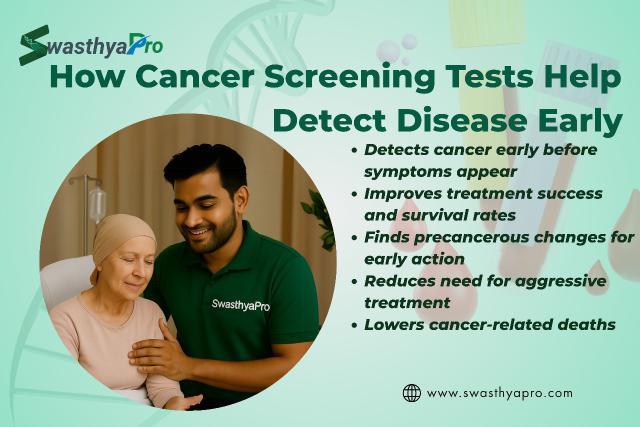Cancer Screening Test vs. Diagnostic Test: What’s the Difference?

Introduction: Two Important Tools in Healthcare
Many people confuse a cancer screening test with a diagnostic test, but they are not the same. Both are used in healthcare, and both are important in the fight against cancer. However, they serve different purposes. Understanding the difference helps patients make informed decisions and reduces unnecessary fear or confusion. Let’s explore how each one works and when they are used.
What is a Cancer Screening Test?
A cancer screening test is used to look for cancer in people who have no symptoms. It’s done as a preventive measure to detect signs of cancer at an early stage—often before it causes any harm. Common examples include mammograms for breast cancer, Pap smears for cervical cancer, and colonoscopies for colon cancer. The goal of a cancer screening test is to catch the disease early when treatment is likely to be more successful.
What is a Diagnostic Test?
Unlike a cancer screening test, a diagnostic test is done when symptoms are already present or when a screening test shows something unusual. It helps doctors confirm whether cancer is actually present and what type it might be. For example, if a mammogram (screening test) shows a lump, a biopsy (diagnostic test) may be done to check if the lump is cancerous. Diagnostic tests provide more detailed information about the condition.
Why Screening Matters Before Symptoms Show
The main benefit of a cancer screening test is that it looks for warning signs before you even know something is wrong. Many types of cancer grow silently in the body. By the time symptoms appear, the disease may already be advanced. A regular cancer screening test can help prevent that. Early detection often leads to simpler treatments and better survival rates, which is why doctors encourage screening based on age and risk factors.
When Does a Diagnostic Test Become Necessary?
A diagnostic test becomes necessary when a cancer screening test finds something unusual, or when a person reports symptoms like unexplained weight loss, fatigue, or pain. These tests include CT scans, MRIs, biopsies, and endoscopies. While they can feel more intense or involved, they are essential for confirming whether cancer is present and for deciding on the right treatment plan.
Working Together for Your Health
Both the cancer screening test and the diagnostic test play vital roles in healthcare. Screening helps prevent or catch cancer early, while diagnostics provide the confirmation and detail needed for treatment. They are not in competition—they work together. Skipping a cancer screening test could delay the need for a diagnostic test, which might allow the disease to grow unnoticed. Taking both seriously gives you the best defense.
Conclusion: Know the Difference, Protect Your Health
Understanding the difference between a cancer screening test and a diagnostic test empowers you to take action. Screenings are your first line of protection, while diagnostics give answers when something seems wrong. If your doctor recommends a cancer screening test, don’t hesitate. And if a follow-up diagnostic test is needed, it means your care team is being thorough. Both steps are part of a smart, proactive approach to health.

- Art
- Causes
- Best Offers
- Crafts
- Dance
- Drinks
- Film
- Fitness
- Food
- Jogos
- Festival
- Gardening
- Health
- Início
- Literature
- Music
- Networking
- Outro
- Party
- Religion
- Shopping
- Sports
- Theater
- Wellness



